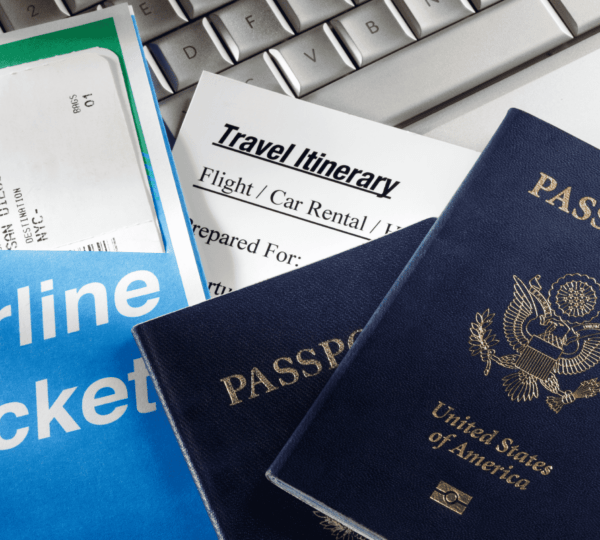
How to Organize a Family-Friendly Vacation Itinerary
It was a cold December evening when Sarah found herself in the middle of a snowstorm, stranded at an airport with her two kids. Their long-anticipated holiday to Florida had turned into a nightmare—missed flights, zero hotel reservations, and absolute chaos. As she scrambled to find accommodation for the night, she realized the one thing she had overlooked: a well-structured travel itinerary.
While Sarah’s experience was unfortunate, it serves as a valuable lesson: a family-friendly vacation requires meticulous planning. Whether you’re traveling to a tropical paradise, a historical city, or a countryside retreat, organizing a well-structured itinerary can make all the difference between a stress-free adventure and an overwhelming trip.
Why a Well-Planned Itinerary is Essential
Family vacations are not just about visiting new places—they’re about creating memories. According to a study published in the Journal of Travel Research, families that engage in well-planned vacations experience higher satisfaction levels than those who take spontaneous trips. A good itinerary balances fun, relaxation, and convenience, ensuring every family member has an enjoyable experience.
Expert Opinion: Travel expert Rick Steves emphasizes that “having a structured itinerary allows families to maximize their time, enjoy a variety of experiences, and avoid unnecessary stress.”
Steps to Organize a Family-Friendly Vacation Itinerary
1. Choose a Destination That Suits Everyone
Picking a vacation spot that caters to all family members is crucial. While adults may enjoy a cultural city tour, kids might prefer amusement parks or outdoor adventures. Popular family-friendly destinations include:
- Orlando, Florida: Home to Disney World and Universal Studios.
- Banff National Park, Canada: Ideal for nature-loving families.
- Tokyo, Japan: A blend of history, modern attractions, and child-friendly entertainment.
- Paris, France: Offers a mix of Disneyland Paris, museums, and parks for children.
- Sydney, Australia: Great beaches, wildlife parks, and scenic attractions for all ages.
Tip: Use blogs like Lonely Planet and The Points Guy to read travel reviews and recommendations before deciding.
2. Create a Flexible Daily Schedule
A rigid itinerary can be exhausting, but an overly relaxed schedule might result in missed opportunities. Structure your days with:
- Morning Activities: Sightseeing, hiking, or theme park visits.
- Afternoon Breaks: A lunch stop with time to rest.
- Evening Entertainment: Local events, shows, or a quiet family dinner.
Fun Fact: Studies show that families who maintain a balance between activity and downtime enjoy vacations more and experience less travel burnout.
3. Book Accommodations in Advance
Choosing the right lodging can make or break your trip. Consider these factors:
- Proximity to attractions: Reduce commute time.
- Kid-friendly amenities: Pools, play areas, or babysitting services.
- Cost and comfort: Balance budget and convenience.
Websites like TripAdvisor and Booking.com provide reliable reviews and ratings to help you decide.
4. Plan Transportation and Logistics
How will you get around? Options vary depending on the destination:
- Car rentals: Ideal for road trips and suburban areas.
- Public transportation: Metro, buses, and trams work best in urban areas.
- Shuttle services: Convenient for airport transfers and hotel commutes.
Pro Tip: Download offline maps and transit apps like Google Maps or Rome2Rio to avoid getting lost.
5. Prioritize Family-Friendly Attractions
Instead of overloading your itinerary, pick key attractions that appeal to all age groups. Some family-friendly options include:
- Educational Museums: Smithsonian (Washington D.C.), Science Museum (London).
- Outdoor Adventures: National parks, beaches, and zoos.
- Theme Parks: Disneyland, Legoland, and SeaWorld.
- Aquariums and Wildlife Parks: Singapore Zoo, Monterey Bay Aquarium.
6. Budget Smartly
Vacations can be expensive, but a strategic budget can help:
- Pre-book tickets: Many attractions offer discounts for early bookings.
- Meal planning: Opt for accommodations with kitchenettes to save on dining expenses.
- Use travel reward programs: Frequent flyer miles and hotel points can help reduce costs.
- Look for free attractions: Many cities offer free parks, museums, and walking tours.
7. Pack Smartly and Prepare for Emergencies
Packing should be practical:
- Essentials: Clothes suitable for weather, first-aid kits, travel documents.
- Entertainment for Kids: Books, tablets, travel-friendly board games.
- Snacks and Hydration: Healthy, non-messy snacks to keep hunger at bay.
- Power banks and chargers: To keep devices functional during long days.
Additionally, always have emergency contacts, travel insurance, and backup copies of important documents.
8. Plan for Unforeseen Circumstances
Not everything will go as planned. Have contingency options:
- Alternative attractions: In case of bad weather.
- Extra rest days: To avoid travel fatigue.
- Emergency funds: For unexpected expenses.
9. Involve Kids in the Planning Process
When children feel included in the planning, they are more engaged and excited about the trip. Let them pick an activity, choose a meal, or research an attraction. This builds their sense of adventure and responsibility.
10. Capture and Preserve Memories
A vacation isn’t just about the experience—it’s about the memories you create. Consider:
- Journaling or Scrapbooking: Let kids write about their favorite parts.
- Photography and Videos: Capture special moments to relive later.
- Souvenirs: Small keepsakes from each location visited.
Conclusion
A well-organized family-friendly itinerary transforms a trip into a seamless and unforgettable experience. By choosing the right destination, planning activities wisely, and preparing for unexpected situations, you can ensure a stress-free and memorable vacation. Remember, flexibility is key—so while you follow your plan, don’t forget to leave room for spontaneity and fun!
References:
- Journal of Travel Research – Impact of Structured Itineraries on Family Travel Satisfaction.
- Rick Steves, Europe Through the Back Door – Tips on Travel Planning.
- Lonely Planet – Family Destination Guides.
- The Points Guy – Best Family Travel Rewards and Deals.
- TripAdvisor – Hotel and Destination Reviews.
- Booking.com – Accommodation Planning and User Reviews.











